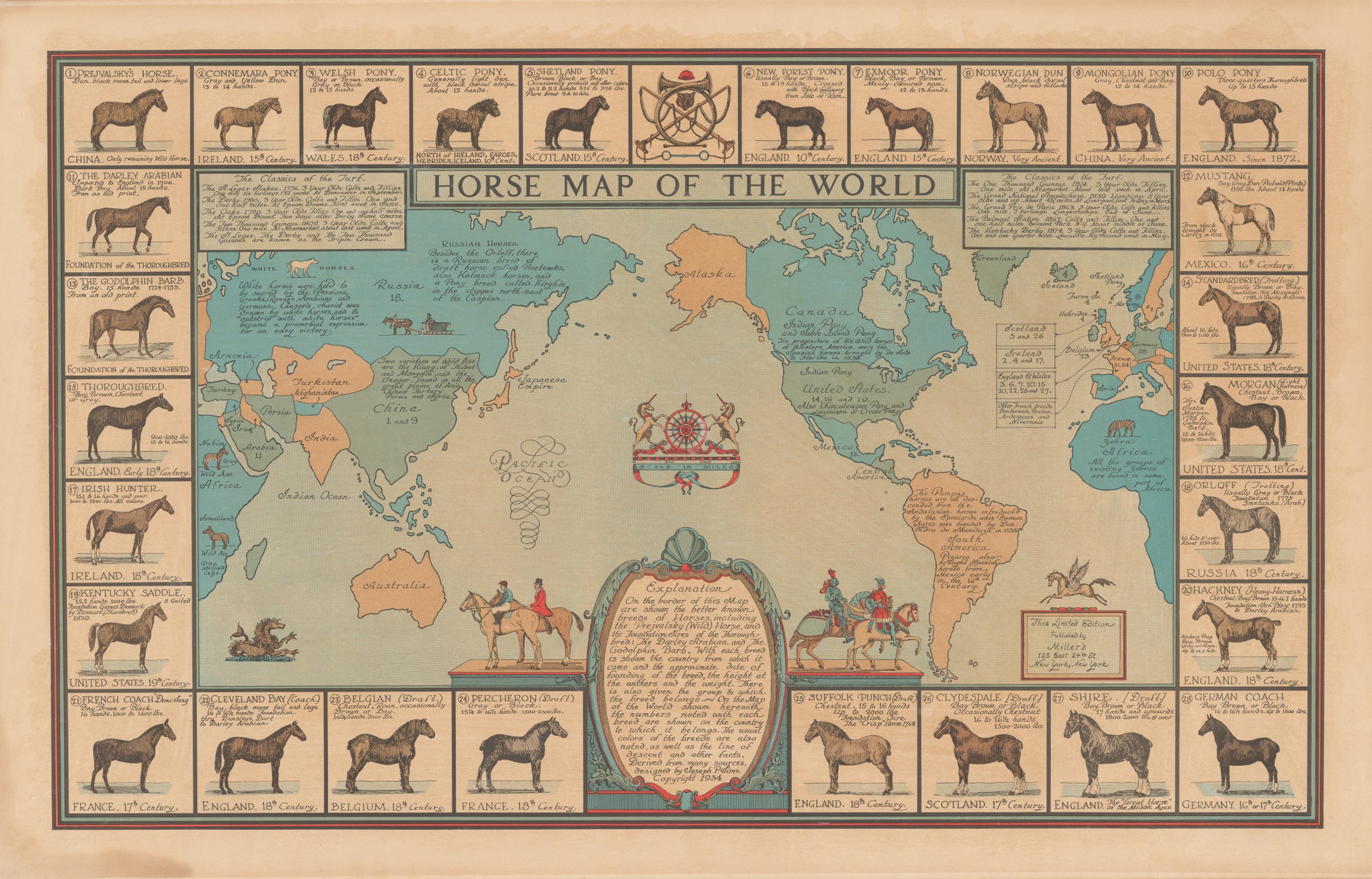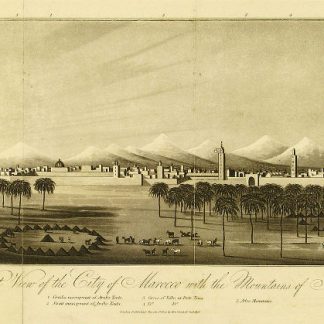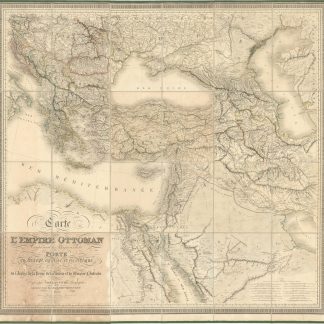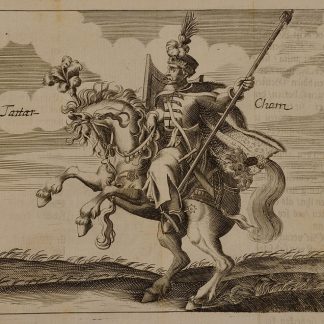[VERKAUFT]
Dieses Stück ist bereits verkauft. Am Ankauf eines gleichwertigen Exemplars bzw. von Stücken ähnlicher Bedeutung sind wir immer interessiert.
The origins and distribution of equine breeds throughout the world
Horse Map of the World.
820 x 530 mm. Chromolithograph map, watermark of Hamilton Bond.
Designed by the architect and keen cartographer Joseph Patterson Sims, this curious map represents the origins and distribution of equine breeds throughout the world. The border surrounding the main map is divided into 28 boxes, each containing a colour illustration of a certain breed, accompanied by its name, place (and sometimes century) of origin, size, colour and, often, weight. Each is assigned a number correlating to the central map, thus demonstrating the distribution of these major breeds across the globe. As if not self-explanatory, Sims includes an extensive explanation contained within an elaborate cartouche in the lower central portion of the map. In this text, he singles out the Prejvalsky, perhaps as the "only remaining wild horse", and the ancestors of the modern thoroughbred, because of their significance in racing. In fact, the map appears to be formed with fans of the equestrian sport in mind, with two boxes in the upper corners listing "The Classics of the Turf'", that is, the principal annual horse races. The highly decorative nature of the cartouche is complemented by the plinths on either side, both of which are surmounted by riders in various outfits, and are undoubtedly designed to express a short history of European horsemanship, with contemporary jockey and equestrian on the left, and medieval figures on the right.
On the map itself, other breeds including the Beetewk, the Nubian Gray Wild Ass of Africa and, interestingly, the Zebra, are illustrated, along with annotations providing additional information. One such note discusses the superstitions surrounding white horses which, although historically spurious, undoubtedly contributes to the light-hearted style of the work. Others suggest other breeds that might also be found in the given country, although, surprisingly, none are attributed to India, where there is literary and visual evidence of equine activity for several millennia, Turkistan (modern Kazakhstan), which is known to have been responsible for at least four breeds, or the Iberian Peninsula. The latter is perhaps the most striking omission, given that an annotation above South America explains that horses were brought there by the Spanish in the 16th century. Indeed, although the equus genus did originate in North America, horses had died out there during prehistoric times, and were only reintroduced by Europeans upon the discovery of the New World. Likewise, the much-simplified map of Asia documents the origins of only Chinese, Russian and Arabic horses, despite the prevalence of horses throughout the continent. Sims does, however, add details of other breeds found in Mongolia, a country with an important equine history and culture, since horses were an essential part of the nomadic existence which many Mongols lived.
Other ornamental features of the map include the scale and compass in the centre, which are flanked by two unicorns, in keeping with the equine theme. Similarly, a hippocampus is illustrated in the lower left corner, while another aspirational horse is shown on the opposite side, flying over a small cartouche containing information about the map's publication.
Cf. Dent, Torguson, Hodler, Cartography: Thematic map design (WCB McGraw-Hill, 1999). Fostenko, The Horses of Central Asia. A Russian Military Study, 1883. Simpson, Horses. The story of the horse family in the modern world and through sixty million years of history (OUP 1951). Van der Dussen, The History of the Idea of Europe (Routledge, 1995).





